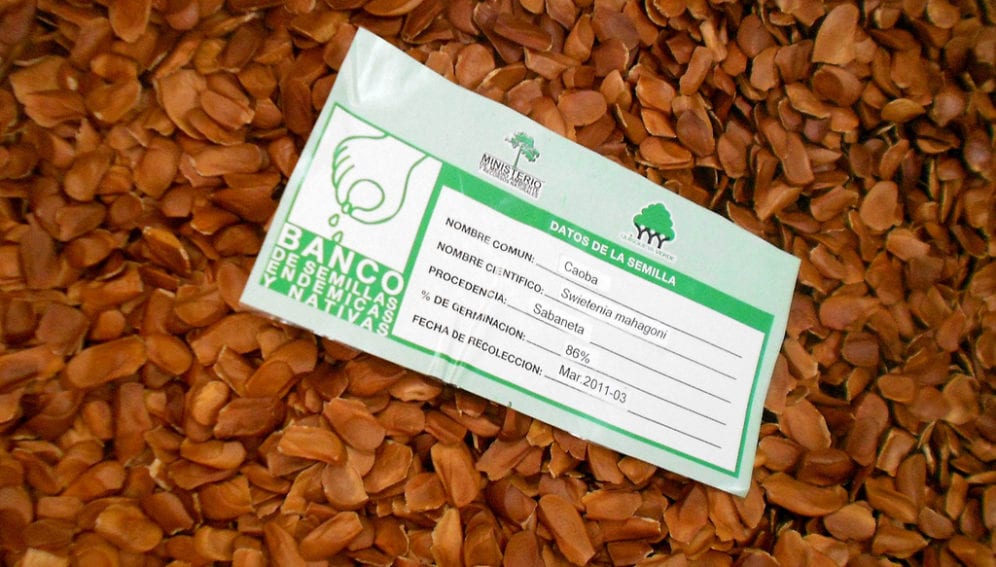By: Joel Winston
Send to a friend
The details you provide on this page will not be used to send unsolicited email, and will not be sold to a 3rd party. See privacy policy.
A recently launched (15 October) website aims to provide news and resources on crop seeds and biodiversity threats for researchers, policymakers, educators and farmers.
The site’s interactive map presents more than 375 case studies from around the world that address issues of food diversity, its threats and potential solutions.
But some experts say that, while on the right track, the site is biased towards smallholder innovations and against those from big industry.
Seedmap.org is a collaboration between USC Canada, an international development organisation focused on improving food security in the developing world, and ETC Group, a technology watchdog with interests in ecological diversity.
The site highlights threats to biodiversity such as climate change and the corporate control of seeds, and proposes solutions focusing on the conservation of local seed varieties.
“There’s been increasing pressure on farmers to switch from their local seeds to either hybrid seeds in the Green Revolution and now to genetically modified seeds,” Genevieve Grossenbacher, a programme manager with USC Canada tells SciDev.Net.
“Although in some contexts there are benefits, in the long-term those seeds are often not well adapted to the local climate, and we’ve seen a drop in biodiversity. Having a diverse base of local and well-adapted seeds is a great and transparent policy against disaster, and is something we need to invest more energy into.”
The team behind the website says that small-scale farmers are coming up with innovative ways to protect seed diversity.
Seedmap.org case studies include, for example, on-farm conservation and community seed banks in Ethiopia for saving durum wheat varieties from extinction, participatory rice breeding in the Philippines and developing hurricane-resistant corn and bean varieties in Honduras.
The ETC Group, which is responsible for much of the map’s research, is a vocal critic of industrial agriculture and biotechnologies, and some of these are categorised as threats on the SeedMap site.
“If we could take the amount of investment in new technologies, and put it into supporting existing technology and farmer knowledge, then I think we would go much further.”
Faris Ahmed, USC Canada
Faris Ahmed, who is in charge of policy and campaigning at USC Canada, explains that the website addresses an information gap by focusing on farmer knowledge systems, which industrial agriculture often does not value.
“The map is full of techniques developed by farmers that are cheap, easily shared and very suited to particular ecosystems because they originate from there,” he tells SciDev.Net. “If we could take the amount of investment in new technologies, and put it into supporting existing technology and farmer knowledge, then I think we would go much further.”
But Kent Bradford, director of the Seed Biotechnology Center at the University of California, Davis, United States, describes the site as “essentially propaganda” and “a very one-sided representation of the challenges of feeding the world”.
He says: “Nobody disagrees with the importance of supporting seed banks and maintaining diversity. But, in this case, it distorts the situation with respect to crop improvement, biodiversity and the impacts of using low-productivity varieties.”
He says the support for seed banks and biodiversity should not require farmers to continue growing low yielding seeds.
“If we want small farmers to operate crop ‘museums’ and living seed banks, let’s subsidize them to do it, rather than expect them to do it just because we need them as a source of diversity,” he says.
The Seedmap.org team at USC Canada says the aim is for the site to be a collaborative platform. It accepts contributions for the news and map sections and is especially keen to hear from scientists.
Paul Jepson, director of the Integrated Plant Protection Center, Oregon State University, United States, says: “The concept behind the seed biodiversity map is an interesting one — it should allow assessments of threats and opportunities to be made at multiple scales, and it should facilitate connections to be made between projects.”
But he shares some of Bradford’s concerns, saying the site is “marred by a campaigning style which renders many of the links unhelpful and uninformative”.
“We should be encouraging a culture of innovation that respects all forms of agriculture and methods of plant breeding, and I would welcome a more open, inclusive and complete approach to mapping that helps us to recognise where progress is being made so that we can all support this and help it to grow.”
> Link to Seedmap.org














